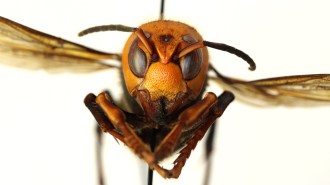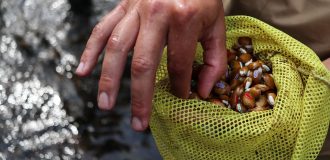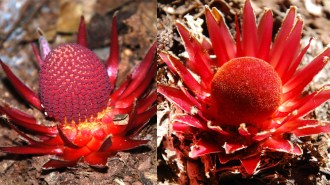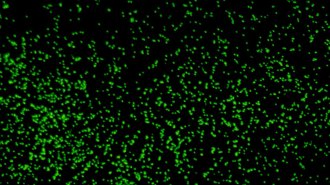Ecosystems
-
 Animals
AnimalsClearing land to feed a growing human population will threaten thousands of species
Changing where, how and what food is grown could largely avoid biodiversity losses, scientists say.
-
 Animals
AnimalsPlastic waste forms huge, deadly masses in camel guts
Eating plastic isn’t just a sea animal problem. Researchers found suitcase-sized masses of plastic in dromedaries’ guts in the United Arab Emirates.
By Asher Jones -
 Environment
EnvironmentPlastics are showing up in the world’s most remote places, including Mount Everest
From the snow on Mount Everest to the guts of critters in the Mariana Trench, tiny fragments called microplastics are almost everywhere.
-
 Microbes
Microbes50 years ago, scientists suspected microbes flourished in clouds
In 1970, scientists presented early evidence that microbes in clouds may be alive and kicking.
-
 Life
LifeA new map shows where Asian giant hornets could thrive in the U.S.
Suitable habitat along the Pacific West Coast means so-called “murder hornets” could get a foothold in North America if they aren’t eradicated.
-
 Ecosystems
EcosystemsTrapped under ice, light-loving algae grow in the dark Arctic winter
Blocked off from nearly all light beneath a thick layer of ice and snow in the winter, marine phytoplankton in the Arctic still find a way to thrive.
-
 Environment
EnvironmentWhat we know and don’t know about wildfire smoke’s health risks
As wildfires become more frequent and severe in California, Oregon and throughout the West Coast, concerns rise about harmful air pollution.
By Aimee Cunningham and Maria Temming -
 Ecosystems
EcosystemsProtecting half the planet could help solve climate change and save species
An analysis lays out where new land protections could complement existing protected areas to achieve various conservation and climate goals.
-
 Animals
AnimalsFemale hyenas kill off cubs in their own clans
Along with starvation and mauling by lions, infanticide leads as a cause of hyena cub death. Such killings may serve to enforce the social order.
-
 Ecosystems
EcosystemsTo save Appalachia’s endangered mussels, scientists hatched a bold plan
Biologists have just begun to learn whether their bold plan worked to save the golden riffleshell, a freshwater mussel teetering on the brink of extinction.
-
 Plants
PlantsThis parasitic plant consists of just flashy flowers and creepy suckers
With only four known species, Langsdorffia are thieves stripped down to their essentials.
By Susan Milius -
 Oceans
OceansThese ancient seafloor microbes woke up after over 100 million years
Scientists discover that microbes that had lain dormant in the seafloor for millions of years can revive and multiply.